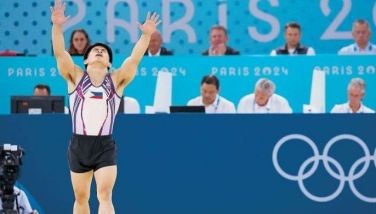Public inquiries that take the place of private research

Cannot national and local legislators do research without need for tedious, costly plenary inquiries? The question arises in the wake of two proposals for such inquiries in the Senate and in the Manila city council. In both instances, the proponents are asking for full-dress investigations in order to obtain certain information. Yet in both cases, too, they readily can get the needed details by simply lifting the phone.
Sen. Antonio Trillanes IV wants plenary hearings on the contracts of Greater Manila’s two water concessionaires. He particularly resents the provisos in which the government authorizes the two to pass on to customers their income taxes. On interpellation, Sen. Juan Ponce Enrile asked what Trillanes intends to do after getting hold of the papers. Would he undertake to rescind the deals, at the risk of violating the Bill of Rights that “No law impairing the obligation of contracts may be passed�
It turned out from their tart exchange that all Trillanes wants is to verify if the provisos are true. In which case, all he has to do is request the waterworks agency for copies of the contracts. He can also read the many newspaper reports on the hot issue he is riding on. He may even check his office’s water bills, since the income tax pass-on is stated therein. Or, he can read the thorough petition filed by consumerists with the Supreme Court for a customer refund.
Speaking of which, jurisprudence would be enriched however way the High Court decides the case. So, would not any Senate investigation in aid of legislation be a needless duplication of work?
Of course, there are no publicity points to be scored from a private reading of pertinent documents or a patient waiting for a coequal branch to complete its work. Conversely big headlines can be made from publicly beating the two hated water concessionaires. Then again, public fights can go awry. Remember when Trillanes scolded the foreign office for, so unlike him, not appreciating that “friendly†China had no evil intent in the Bajo de Masinloc shoal? Days after he said that, China proclaimed that its navy had taken over that traditional Filipino fishing ground.
In Manila, meanwhile, Councilor Ali Atienza wants a full-scale inquiry into the “missing†mural of National Artist Carlos Francisco at the city hall. In his speech he demanded to know if the painting truly is at the National Museum for restoration, if such refurbishment will alter the look of the masterpiece, and if it will be returned to the city hall afterwards. The restoration will cost a staggering P20 million, he said, so there must be full transparency.
The son of a former Manila mayor and once the city hall’s chief of sports and of urban development, Atienza surely is familiar with the many offices there. Had he paged the Property Section, he would have been told that, weeks before his council term began in July, one of the mural’s ten panels fell off the wall. The Culture Section instantly called in the National Museum, which noted that the nine other panels too needed repairs. The transmittal papers and costs immediately were drawn up to properly care for the priceless artwork.
A quiet inquiry would have elicited those details — and more. Like, the Culture Section chief at the time the restoration was contracted also used to head the National Museum and the Tourism Ministry. Thus, she knows what she’s doing.
Again, there’s no publicity in quiet research, unlike in attacking the previous city administration, which incidentally had once defeated Atienza for the mayoralty. Incidentally too, a lawmaker once made big news in loudly calling for the repeal of the law of supply and demand.
* * *
Coming soon is a book on the artist Galo B. Ocampo, written by art critic Alice G. Guillermo.
The story of Ocampo’s life and works deserves to be told. He belongs to the Triumvirate, with Victorio Edades and Carlos Francisco, who ushered in modernism in the Philippines in the ‘30s. His “Brown Madonna†shifted the iconography of Philippine religious art from the Caucasian to the native model, thus enhancing the Filipino sense of identity. His prizewinning “Bayanihan†marked the triumph of modernism in the Art Association in the Philippines and in the country. “Ecce Homo,†influenced by surrealism with Christ standing amid the fury of war, is an iconic painting for the world and for all time.
A versatile artist, Ocampo designed the beautiful stained glass of the Manila Cathedral. He also designed the Philippine coat of arms and the presidential seal, unique achievements in heraldry. During the War, he was recognized by the USAFFE as a guerrilla, working for a time under the intelligence outfit of Fernando Poe Sr., in the guise of a theatre group to survey enemy movements.
Ocampo served the government for long years, as heraldry consultant, member of the foreign office staff of Carlos P. Romulo, and head of the National Museum. All past Presidents of the Philippines acclaimed him.
* * *
Catch Sapol radio show, Saturdays, 8-10 a.m., DWIZ (882-AM).
Gotcha archives on Facebook: https://www.facebook.com/pages/Jarius-Bondoc/1376602159218459, or The STAR website http://www.philstar.com/author/Jarius%20Bondoc/GOTCHA
E-mail: [email protected]
- Latest
- Trending



























